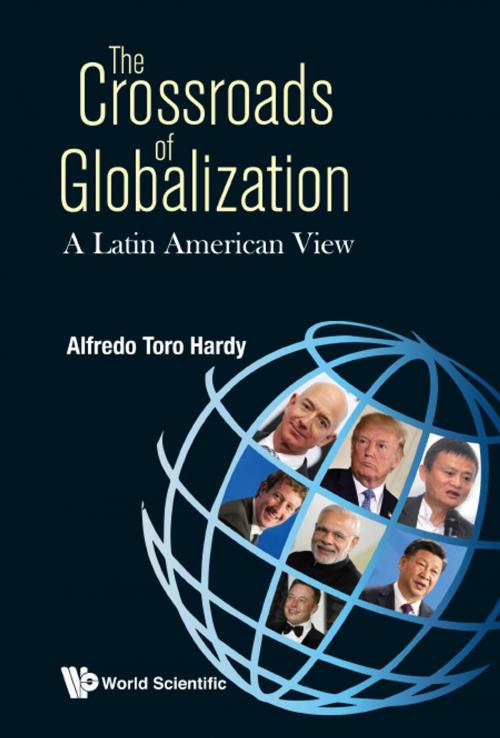The Crossroads of Globalization
A Latin American View
Business & Finance, Economics, International Economics, Nonfiction, Social & Cultural Studies, Social Science| Author: | Alfredo Toro Hardy | ISBN: | 9789813277328 |
| Publisher: | World Scientific Publishing Company | Publication: | December 28, 2018 |
| Imprint: | WSPC | Language: | English |
| Author: | Alfredo Toro Hardy |
| ISBN: | 9789813277328 |
| Publisher: | World Scientific Publishing Company |
| Publication: | December 28, 2018 |
| Imprint: | WSPC |
| Language: | English |
Two powerful forces measure their strength by acting upon globalization. One of them pushes globalization forward, while the other hinders its advance and promotes its decline.
In which of those directions should Latin America move? Uncertainty hinders the region's strategic vision. If the future entails re-launching of globalization, it seems obvious that Latin America should follow along its lines. However, if globalization were to embark on a declining phase and an endangered future, the region would need to look at other options.
Latin America, therefore, faces not only a dramatic uncertainty as a result of forces beyond its control, but also needs to anticipate unforeseen events to the best of its abilities, and react to or act upon them. Strategic reflection becomes imperative to manage both uncertainty and the possibility of rapid change.
This exercise in strategic reflection implies an immersion in fraught international surroundings, analyzing the forces that push for and against globalization, trying to measure their respective strength, convergence capacity, and potential impact. At the same time, it requires looking into the flaws, weaknesses and contradictions of such forces. With these elements in hand, it will be easier to envisage where the trends are leading to, and by extension, where Latin America may end up standing and which goals it should follow.
Contents:
- Latin America: A Background
- The Pro-Globalization Coalition
- China: Globalization's Driving Force
- The Anti-Globalizers
- Technology: Making Globalization Redundant
- The Consistency of Both Sides
- Latin America's Route Map
Readership: Business professionals, researchers, undergraduate and graduate students interested in knowing more about Latin America and Latin American Economic Growth; business and trade federations; institutes or centers for Latin American studies in universities.
Key Features:
- Interrelates a group of subjects that are normally treated independently. In doing so, it allows to have a much better perspective of the global forces in play
- Traces a route map for Latin American countries in the decades ahead, amid the challenges posed by global forces that are contradictory in nature. This represents a novel approach to the region's challenges
- Analyzes in deep a group of current issues that have become increasingly relevant for the region and that have attracted the attention of both specialists and the general public
Two powerful forces measure their strength by acting upon globalization. One of them pushes globalization forward, while the other hinders its advance and promotes its decline.
In which of those directions should Latin America move? Uncertainty hinders the region's strategic vision. If the future entails re-launching of globalization, it seems obvious that Latin America should follow along its lines. However, if globalization were to embark on a declining phase and an endangered future, the region would need to look at other options.
Latin America, therefore, faces not only a dramatic uncertainty as a result of forces beyond its control, but also needs to anticipate unforeseen events to the best of its abilities, and react to or act upon them. Strategic reflection becomes imperative to manage both uncertainty and the possibility of rapid change.
This exercise in strategic reflection implies an immersion in fraught international surroundings, analyzing the forces that push for and against globalization, trying to measure their respective strength, convergence capacity, and potential impact. At the same time, it requires looking into the flaws, weaknesses and contradictions of such forces. With these elements in hand, it will be easier to envisage where the trends are leading to, and by extension, where Latin America may end up standing and which goals it should follow.
Contents:
- Latin America: A Background
- The Pro-Globalization Coalition
- China: Globalization's Driving Force
- The Anti-Globalizers
- Technology: Making Globalization Redundant
- The Consistency of Both Sides
- Latin America's Route Map
Readership: Business professionals, researchers, undergraduate and graduate students interested in knowing more about Latin America and Latin American Economic Growth; business and trade federations; institutes or centers for Latin American studies in universities.
Key Features:
- Interrelates a group of subjects that are normally treated independently. In doing so, it allows to have a much better perspective of the global forces in play
- Traces a route map for Latin American countries in the decades ahead, amid the challenges posed by global forces that are contradictory in nature. This represents a novel approach to the region's challenges
- Analyzes in deep a group of current issues that have become increasingly relevant for the region and that have attracted the attention of both specialists and the general public




![Cover of the book Contingent Convertibles [CoCos] by Alfredo Toro Hardy](https://www.kuoky.com/images/2014/august/300x300/9789814619912-vwN8_300x.jpg)










